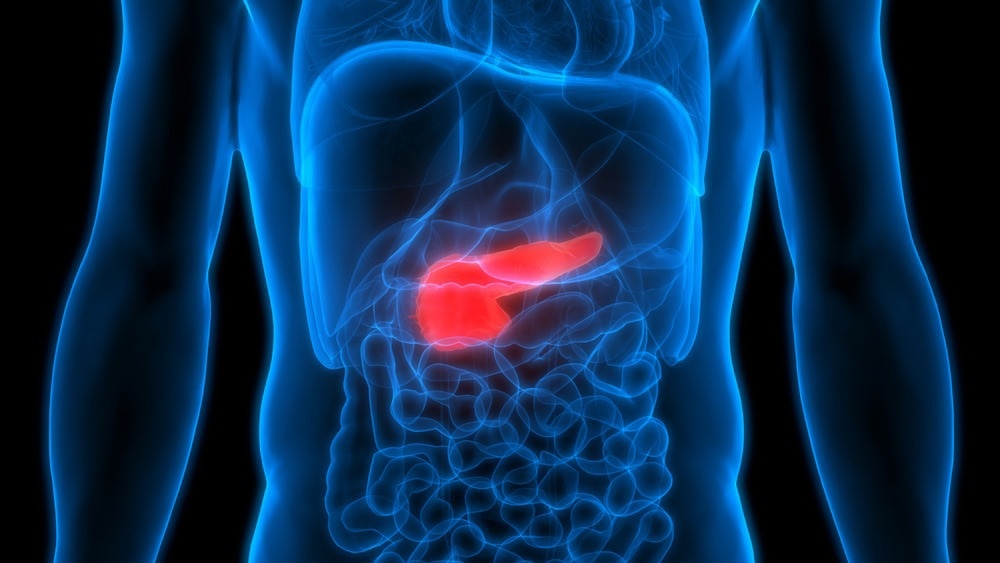 By Surbhi JainReviewed by Susha Cheriyedath, M.Sc.Jun 30 2022
By Surbhi JainReviewed by Susha Cheriyedath, M.Sc.Jun 30 2022In an article recently published in the journal Biomaterials, researchers discussed the advances in bioengineering including the pancreatic tumor-stroma physiomimetic biomodels.

Study: Advances in bioengineering pancreatic tumor-stroma physiomimetic Biomodels. Image Credit: Magic mine/Shutterstock.com
Background
A highly fatal form of cancer that is on the rise globally is pancreatic cancer. The most common and clinically difficult form of pancreatic cancer sub-type to treat is pancreatic ductal adenocarcinoma (PDAC). Through a variety of channels, stromal components associated with tumors actively engage with the microenvironment around them and, more specifically, with pancreatic cancer cells.
Such complex cancer-stromal interactions must be recapitulated in order to advance our knowledge and identify fresh biological targets. The creation of progressively physiomimetic 3D in vitro models that accurately capture the biological and biophysical complexity of the tumor microenvironment (TME) has recently seen impressive efforts and advancements.
In reality, living constructs made by 3D additive manufacturing, microfluidic chips, and increasingly organotypic patient-derived organoids are quickly becoming effective platforms for accurately recreating important TME features. Due to their inherent modularity and bioengineering versatility, these rapidly developing platforms have the potential to fundamentally alter the field of preclinical cancer modeling. They give researchers the chance to precisely introduce important TME elements and tumor tissue-stroma dynamics, which are still difficult to replicate in vitro.
About the Study
In this study, the authors presented and discussed the most recent developments in the creation of bio-assembled pancreatic tumor-stroma models that closely resembled the disease's major symptoms and desmoplastic biosignature.
The team demonstrated a thorough explanation of the biodesign criteria that should be taken into account for the enhancement of the physiomimetic properties of 3D models, which was added to the reverse engineering perspective of the essential constituent units of the pancreatic tumor-stroma. This overview provided researchers with useful examples to create and characterize stroma-rich biomimetic tumor models.
The researchers evaluated the most recent and major advancements in the research on 3D platforms for the modeling of distinctive PDAC tumor-stroma interplay and concentrated on the value of simulating tumor-stroma interactions in in vitro models. The main unitary components and analytical tools that could be used to create physiomimetic living systems for better prediction of the preclinical performance of the candidate therapeutics prior to translation to a clinical setting were also discussed. A thorough overview of the key design blueprints for bioengineering stoma-rich in vitro models was also provided.
Observations
Tumors and pancreatitis both had higher stiffness of 5.46 ± 3.18 kPa, and 2.15 ± 0.41 kPa, respectively, as measured in shear modulus than normal tissue. Tumor-associated macrophages (TAMs) had a generally bad prognosis in more than 80% of all pancreatic tumors due to the release of immune-suppressive cytokines.
Despite the fact that 90% of de novo extracellular matrix (ECM) was deposited in the pancreatic stroma, elevated levels of ECM proteins that were only produced by cancer cells were directly associated with poor patient survival. Mechanical characteristics of pancreatic tumors were quite diverse, which ranged from less than 1 kPa to more than 44 kPa.
One of the most difficult types of cancer to duplicate in a preclinical setting was pancreatic cancer due to its desmoplastic tumor microenvironment and distinctive stromal compartment. While conventional 3D spheroid models and bulk hydrogel-based platforms were useful for the simulation of important tumor-stroma interactions, they typically fall short when it comes to the reproduction of 3D tumor bioarchitecture and evolution underflow.
Such hallmarks could be matched by the synergistic fusion of tumor-on-a-chip devices with 3D biofabrication technologies, an emerging trend that was anticipated to lead to significant advancements in the future. Additionally, the combination of patient-specific tumor organoids that showed organ-like self-organization and pathophysiology that matched the patient had the potential to result in highly individualized treatment plans.
Conclusions
In conclusion, this study elucidated the most recent developments in bioengineering physiomimetic 3D in vitro platforms that recapitulate the distinctive tumor-stroma interplay naturally occurring in pancreatic cancer, focusing on the urgent need to develop increasingly physiomimetic models for both fundamental tumor biology studies and for innovative therapeutics screening.
The authors stated in the future it will be particularly useful to assess therapy responses in anatomically scaled heterotypic models that include realistic CAF subpopulations and the various immune system stromal cells. They mentioned that overall, utilizing cutting-edge bioengineering tools for capturing stromal heterogeneity and dynamics opens new pathways for developing more patient-specific and predictive organotypic 3D in vitro platforms for screening revolutionary therapeutics focusing on the interaction between tumor and stroma.
Disclaimer: The views expressed here are those of the author expressed in their private capacity and do not necessarily represent the views of AZoM.com Limited T/A AZoNetwork the owner and operator of this website. This disclaimer forms part of the Terms and conditions of use of this website.
Sources:
Monteiro, M. V., Ferreira, L. P., Rocha, M., et al. Advances in bioengineering pancreatic tumor-stroma physiomimetic Biomodels. Biomaterials 121653 (2022). https://doi.org/10.1016/j.biomaterials.2022.121653
https://www.sciencedirect.com/science/article/abs/pii/S0142961222002939